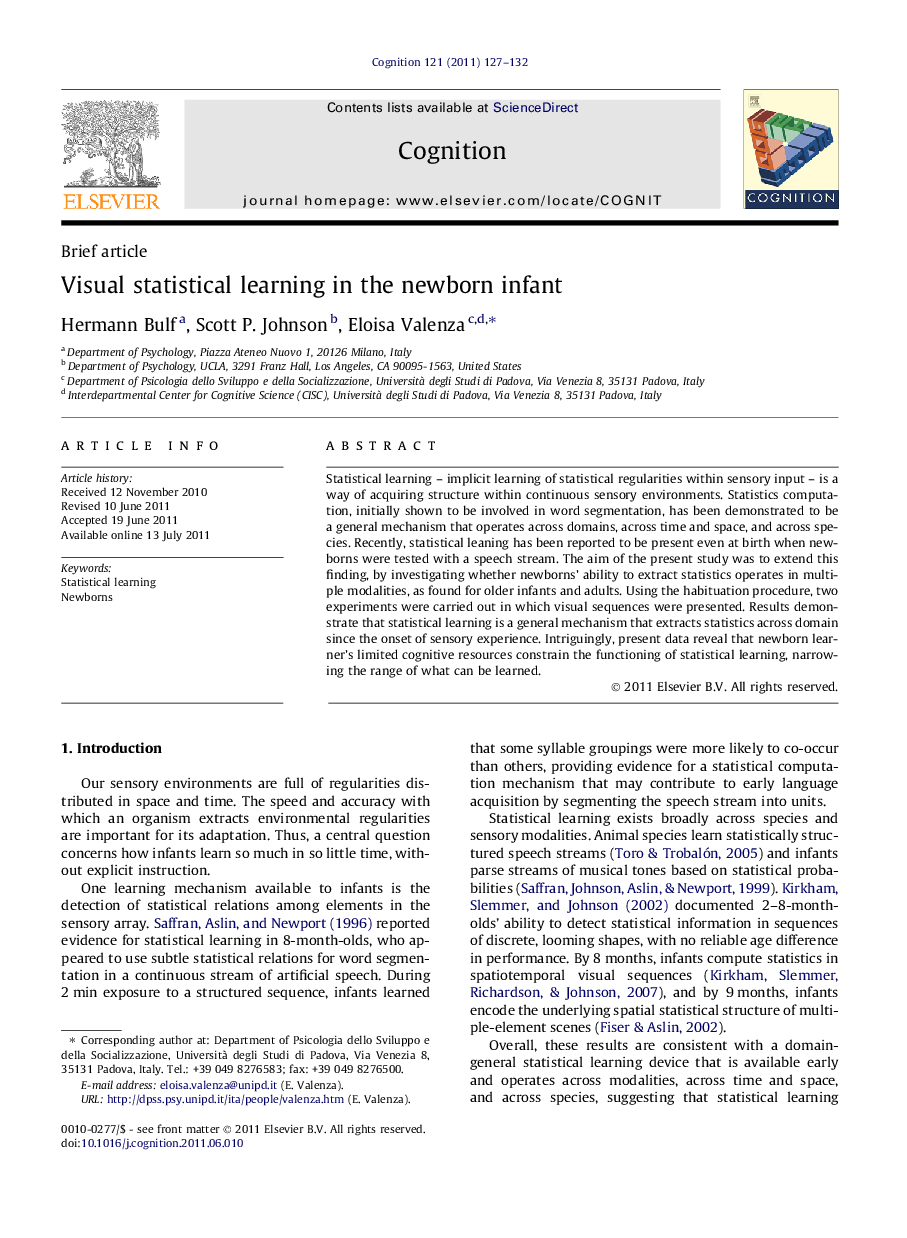| Article ID | Journal | Published Year | Pages | File Type |
|---|---|---|---|---|
| 926478 | Cognition | 2011 | 6 Pages |
Statistical learning – implicit learning of statistical regularities within sensory input – is a way of acquiring structure within continuous sensory environments. Statistics computation, initially shown to be involved in word segmentation, has been demonstrated to be a general mechanism that operates across domains, across time and space, and across species. Recently, statistical leaning has been reported to be present even at birth when newborns were tested with a speech stream. The aim of the present study was to extend this finding, by investigating whether newborns’ ability to extract statistics operates in multiple modalities, as found for older infants and adults. Using the habituation procedure, two experiments were carried out in which visual sequences were presented. Results demonstrate that statistical learning is a general mechanism that extracts statistics across domain since the onset of sensory experience. Intriguingly, present data reveal that newborn learner’s limited cognitive resources constrain the functioning of statistical learning, narrowing the range of what can be learned.
► Newborns’ ability to extract statistical regularities in visual modality. ► Effects of resource limitations to statistical learning at birth. ► Newborns were habituated to a probabilistic sequence of discrete geometric forms. ► Visual statistical learning is available at birth but highly constrained. ► Cognitive limitations narrow the range of what can be learned at birth.
